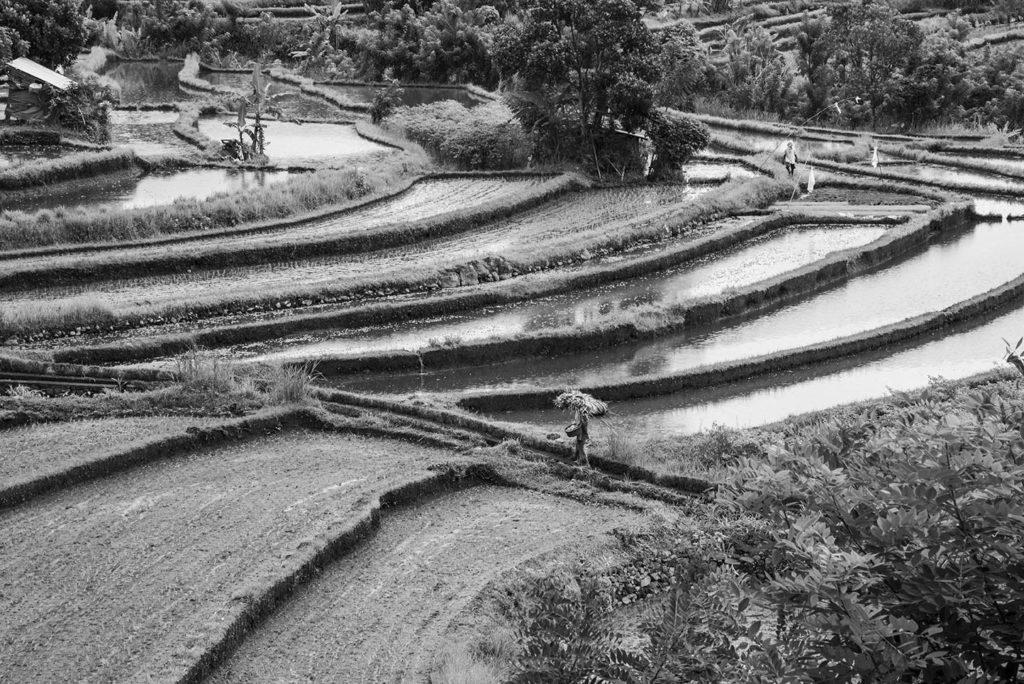The Lesson of Rice
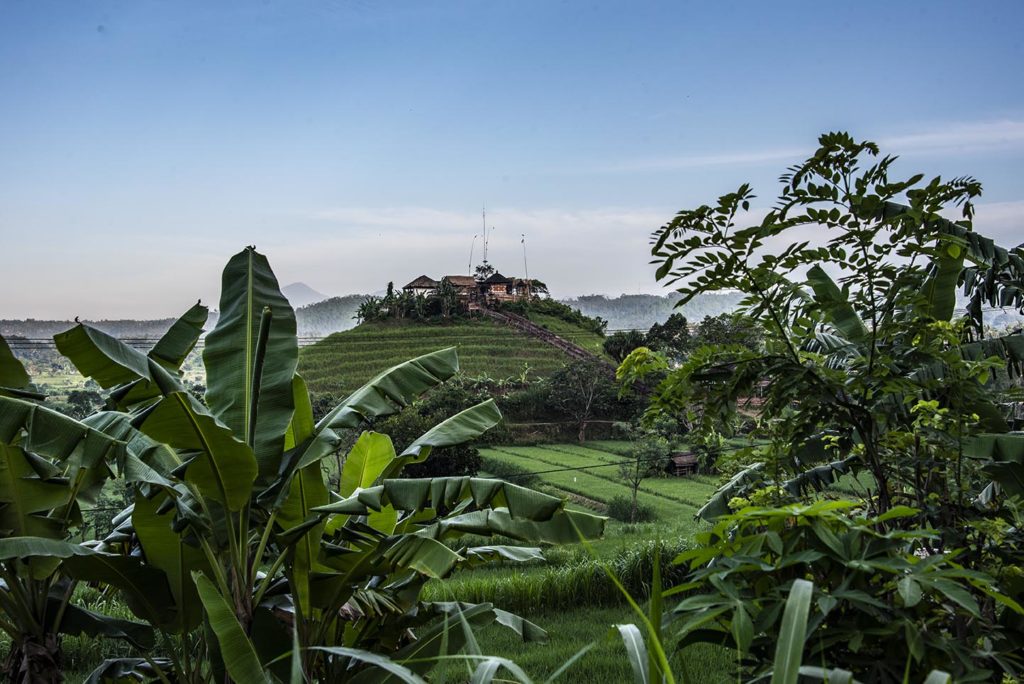
Bali is a place built on rice (and tourism, but we’ll leave the tourism for the moment.) I’m staying in Ubud, one of the main tourist towns in Bali (the one made famous by Elizabeth Gilbert’s Eat, Pray, Love.) It’s a busy place with a perennial traffic jam and stores that run the gamut from a fruit stall on the corner and cheap restaurants in people’s homes, to couture clothing stores, starred eateries that require a reservation, and Starbucks on the corner. It’s also the kind of place that you can come around the corner and find a rice paddy between two rows of houses and where all the tourist maps include trails through the extensive paddies around the town.
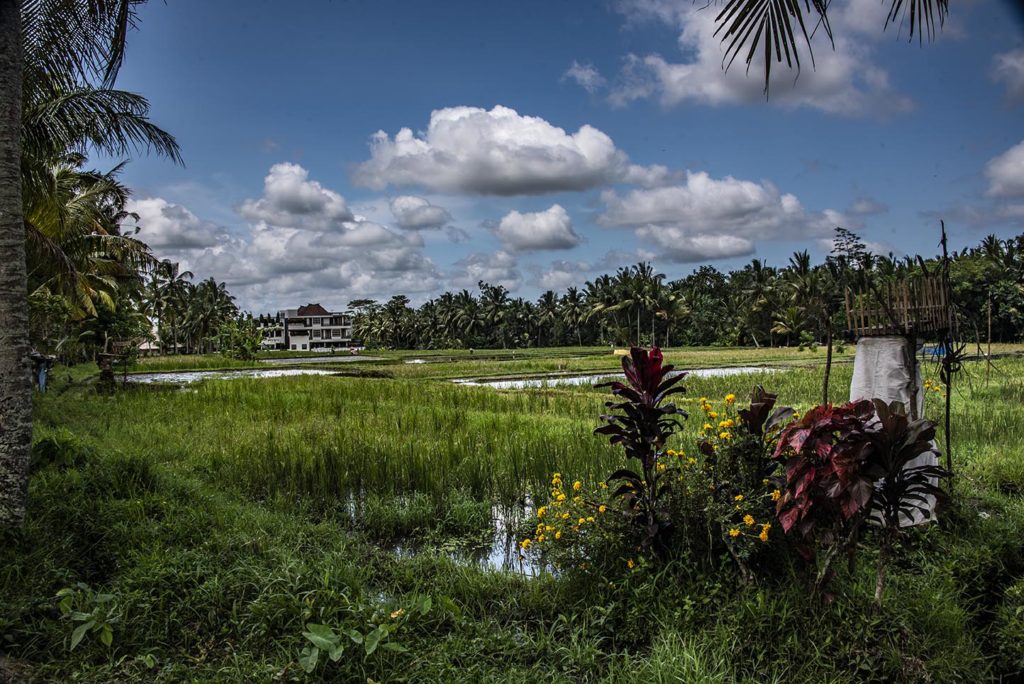
Rice is everywhere: from on your dinner plate, in the innumerable small offerings to the spirits found pretty much everywhere, and even on people’s foreheads when they leave the temple. It comes in colors like white, brown, red and black and I’ve discovered that from amongst that rainbow, I enjoy rice far more here I ever thought I would as I grew up eating the insipid Uncle Ben’s. Yeah, sure, I cook basmati at home, but even basmati is tasteless compared to what I’ve eaten here.
But more than learning to appreciate the nutty flavor of whole red rice, or the sweet goodness of black rice for breakfast, being here has brought me closer to a different understanding of rice in the world. I suppose it’s more of a metaphor.
Bali might be a Hindu island in a Muslim nation, but Bali’s animistic roots are never more evident than in their relationship with rice. Central to the Hindu faith is that God has many manifestations, not just the Trimurti of Vishnu (the creator), Brahma (the maintainer) and Shiva (the destroyer.) God also manifests in the person of Dewi Sri, the rice mother, who receives offerings in shrines built in every rice field. Some shrines are only small wicker platforms built above the rice. Others are more complete structures, but their purpose is the same—to give thanks to the rice mother for the harvest to come. Small offerings of rice, a flower and perhaps incense are left daily to Devi Sri.
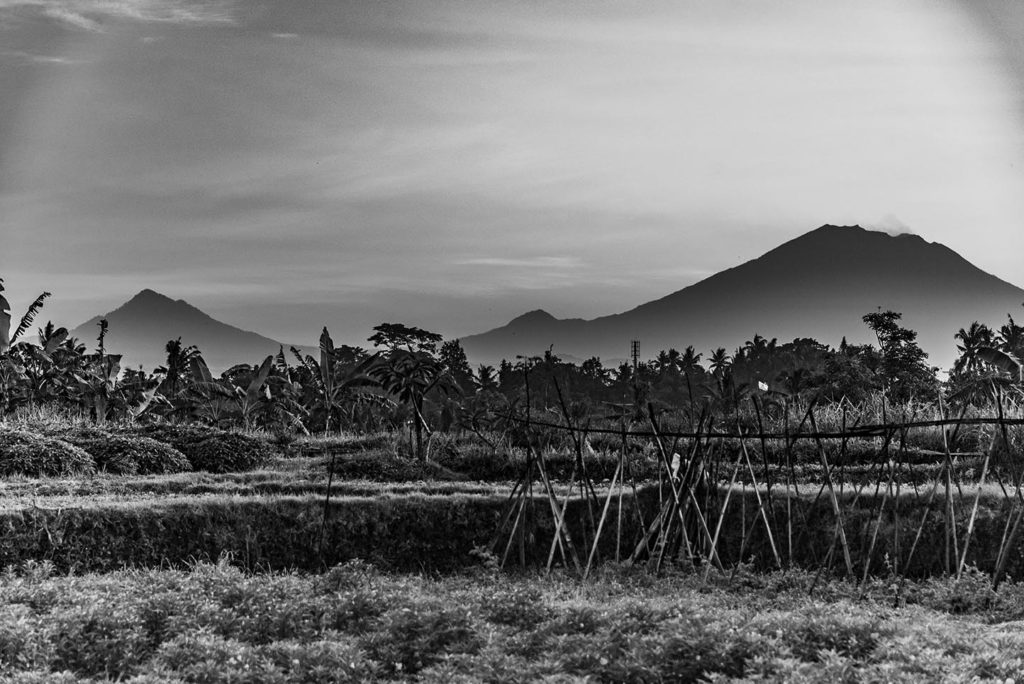
I suppose it’s not surprising that the farmers believe they need the help of the spirits/gods in order to have good harvests. Rice farming is back-breaking work. First the rice is planted in a nursery spot, usually at the corner of the field. Preparing the rice paddies involves plowing, loosening of the soil of the flooded paddy, and then flattening of the soil in preparation for planting. Bali has only recently transitioned from bullocks pulling plows to hand-pushed rototiller machines. Talk about back-breaking.
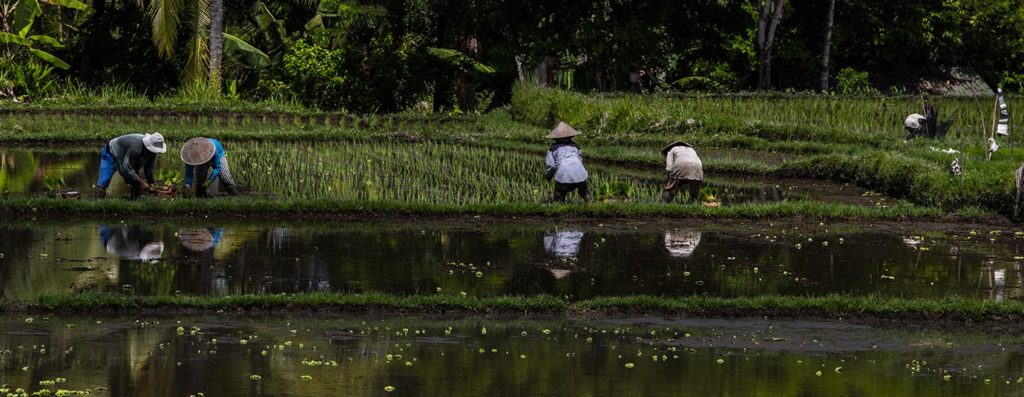
When the young plants are old enough, they are manually uprooted, separated, and replanted in the prepared rice paddies. Think of spending days and days under the unrelenting sun planting individual plants exactly a hand-span apart in rows so perfect, you’d think they’d been laid out on a grid. More backbreaking. Gradually, the plants mature, and then the harvest takes place with old fashioned scythes. It’s no wonder that young people want to leave the farms for opportunities in the cities or in places like Ubud.
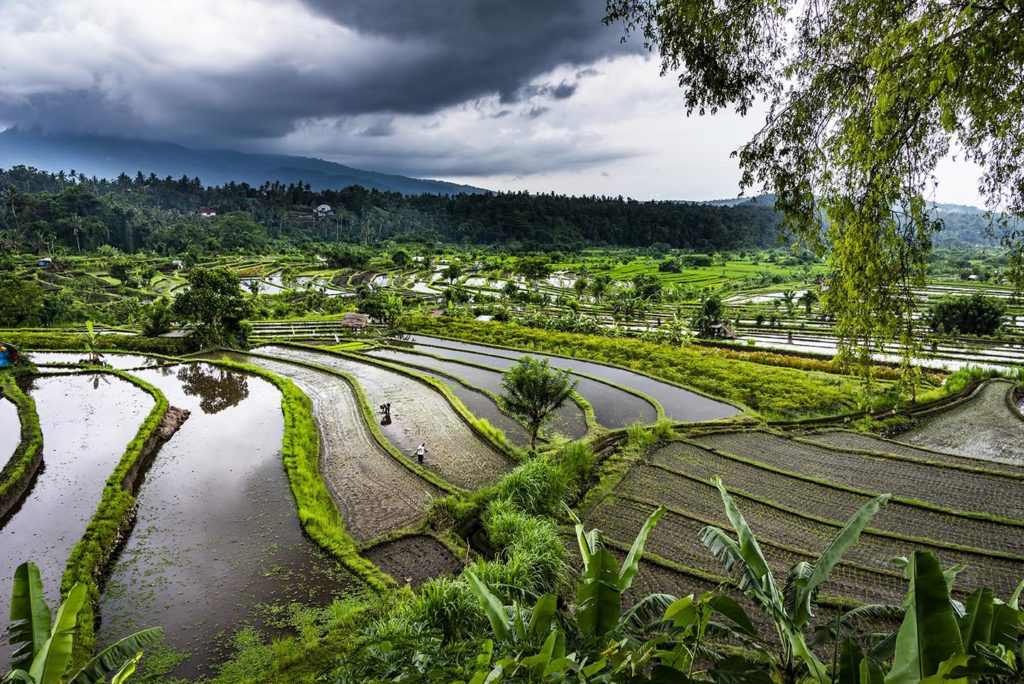
Walking the rice trails, one is struck first by the intense green color, by the egrets dotting the fields and the calls of smaller song birds that accompany the music of water. There is water everywhere, standing in sky-reflecting paddies, running down ditches between the fields and gushing down channels built to guarantee that all farmers’ fields share in the gift of water. In Bali there is a rice farmers’ water cooperative that manages this sharing. They have a governance structure and their purpose is sharing the wealth nature gives them—so much so that their water system is recognized by Unesco World Heritage. There’s even a museum to rice and the water management system, though when I visited it was rather abandoned looking. The information was there, though, when I looked past the cobwebs.
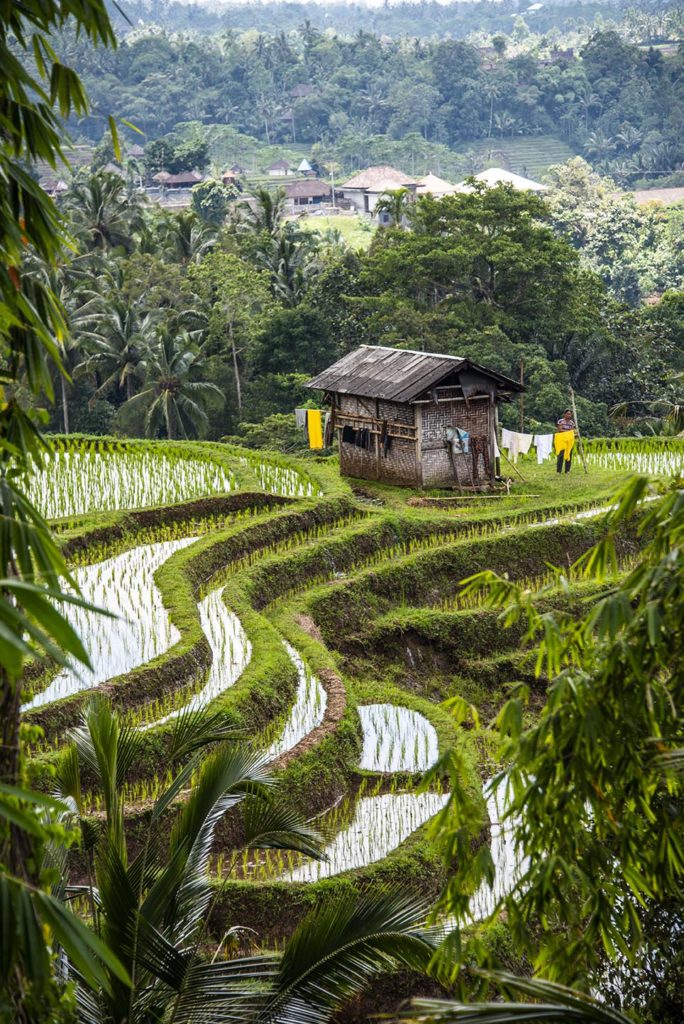
All of this has led to my new appreciation of rice. Like life, it is a gift of the gods. It is also the product of heavy labor by many, many people.
As the Balinese do when they place their offerings to Dewi Sri on the bamboo platforms at the edge of the fields, I want to think about the manifestation of the God and the labor it took to provide EVERY SINGLE GRAIN OF RICE on my plate.
And be thankful.
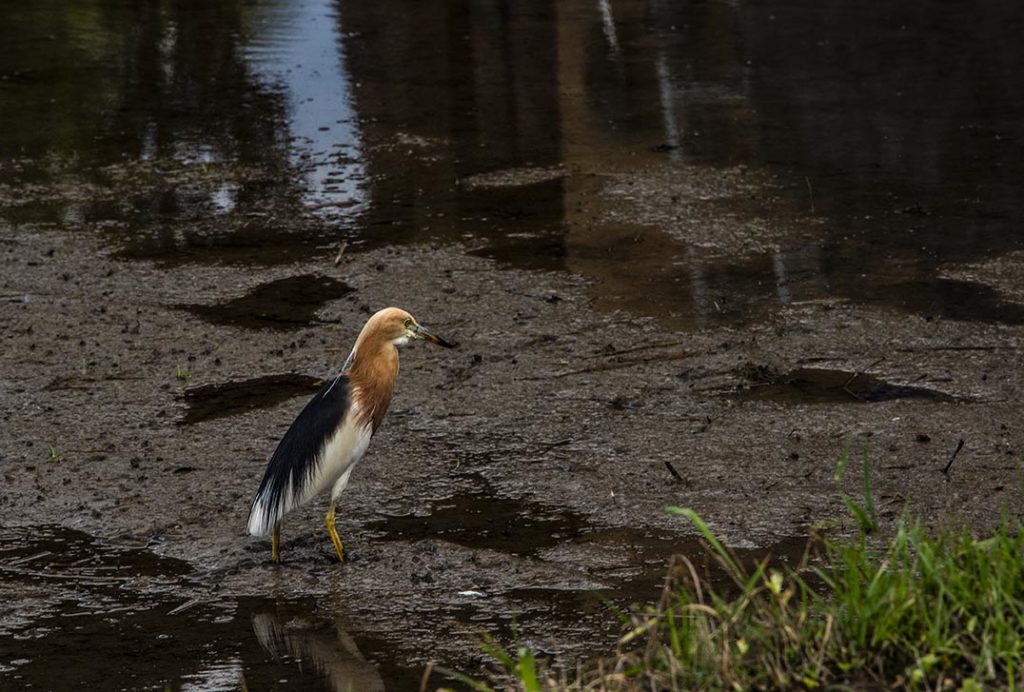
(Yes, I know that in North America big Agro companies provide our rice with little of the labor that I’m seeing in Bali, but from now on I’m going to be more conscious about where my rice comes from. Surely it can only be beneficial to eat food grown with the intention of being in harmony with nature, instead of food grown as a product of genetic manipulation! No wonder North American food is largely tasteless.)
